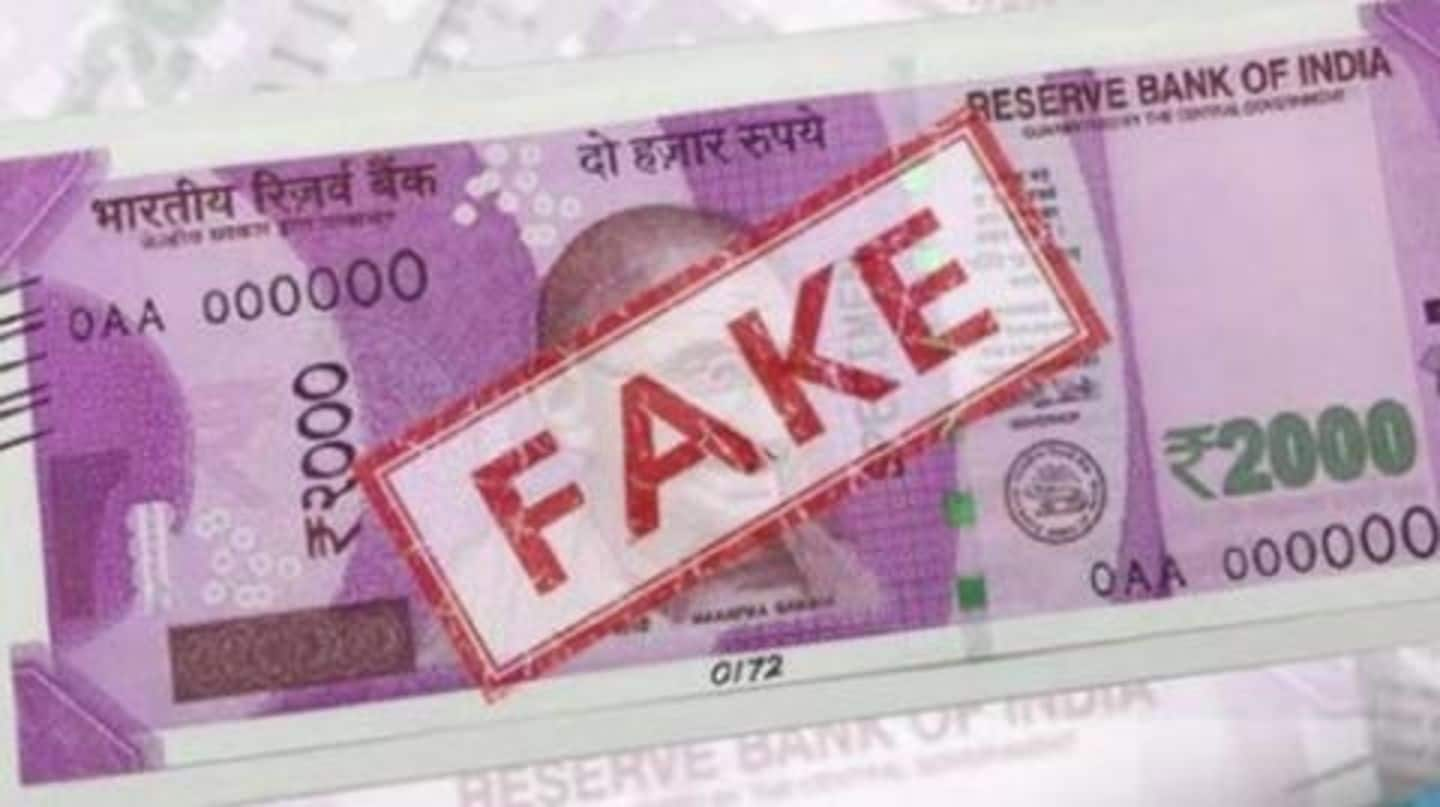
Tezpur University researchers have a solution for fake currency: nano-ink!
What's the story
Counterfeiting or fake currency is a problem that authorities across the globe have struggled to constrain. Miscreants are often drawn to counterfeiting as it's a real money-making (illicit) business, and it's hard to trace once the currency is in circulation. However, a team from Tezpur University may have just come up with a viable solution to curb counterfeiting through nanotechnology. Here's how.
Details
Nano-ink barely visible under daylight; glows under UV
A light-emitting nanocomposite-based ink developed by researchers at Advanced Polymer and Nanomaterial Laboratory (APNL) of Tezpur University has reportedly exhibited the potential to be used as anti-counterfeiting material on paper and plastic. The ink is barely visible under normal light and glows with a cyan hue under ultra-violet light. This property is attributed to physical/optical changes occurring in nanoparticles, that are difficult to duplicate.
Quote
Nanocomposite has intricate structure to prevent imitation: Scientist
"The nanocomposite has an intricate structure to prevent imitation. By dispersing it in organic solvents like xylene, it turns into an ink that can be used directly to write or mark a label," Niranjan Karak, APNL group leader, told India Science Wire. "The liquid appears pale-yellow under visible light, and glows with a cyan (blue-green) tint when exposed to UV light of specific wavelength."
Nanodots
How is it made? Let's introduce you to nanodots first
Nanodots, or quantum dots, are crystals of nanometric scale that illuminate light of a very specific color when light is shone on them. The color of light, nanodots illuminate, depends on their size, which can be tailored to your preference. This technology is already in used to make TV colors more vibrant, but has applications in chemical dyes for biological analyses, solar panels, etc.
Development
Here's how the nano-ink is developed
The structure of the nanocomposite is described as a special polyurethane (PU) polymer matrix with nanodots incorporated into it. Researchers then used pre-polymerization technique to modify the matrix into a special hyperbranched Polyurethane (HPU). This enhanced HPU is then reinforced by nanoparticles of graphitic carbon nitride, a photoluminescent material. The composite obtained is then dispersed in organic solvents, and your nano-ink is ready.
Information
Resulting composite has enhanced mechanical, physical properties
According to researchers, apart from retaining its photoluminescent properties under UV (365 nm wavelength), reinforcement by graphitic carbon nitride greatly enhances the composite's physical and mechanical properties, also contributed by the nanodots' own graphene-like property. And there is a reason why that's relevant.
Advantages
How effective would this nano-ink be?
Difficult to replicate as it is, stress-strain tests revealed that the ink greatly increased the toughness of materials coated by it. The ink is also water-resistant and stable under ambient conditions for months. The polymer is developed from bio-waste of vegetable oils and petrochemicals, making it eco-friendly. On paper and plastic, the ink was observed invisible in daylight, but glowed cyan under UV.
Information
However, there are still some kinks to work out
However, scientists pointed out that although if loaded into a pen refill (which is great for convenience), the nano-ink has a shelf life of up to ten years, but it can degrade within a few months under the action of soil microbes.
Counterfeiting
Why is there a need to re-invent anti-counterfeiting?
Straight-up, demonetization doesn't cut it. A 2018 Financial Intelligence Unit (FIU) report found that fake currency was at an all-time high in 2016-17, up from 4.10 lakh counterfeit currency reports in 2015-16 to over 7.33 lakh in 2016-17. Suspicious transactions grew by 480% after demonetization. Clearly, holograms and barcodes aren't enough. Perhaps someday counterfeiters could mimic the nano-ink, too, but that's a futuristic problem.
Information
Studies to be done to test all-weather performance
Although the nano-ink has anti-counterfeiting potential, it requires more work before it becomes a realistic solution. Karak said, "We are exploring further to test the ink under other light sources. More comprehensive studies will be done to check the performance for all weather conditions."